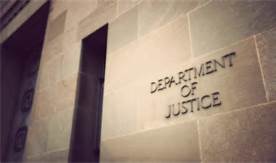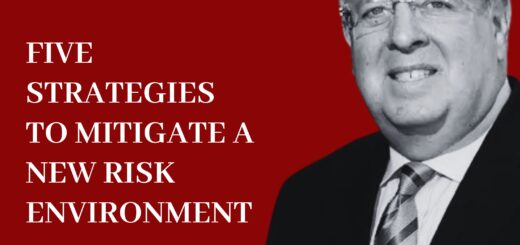The FCPA Person of the Year – The Prosecutor
 To continue a “tradition” on Corruption Crime and Compliance, I like to end the year with recognition of the “person of the year,” referring to the institution which has had the most impact in the enforcement and compliance arena.
To continue a “tradition” on Corruption Crime and Compliance, I like to end the year with recognition of the “person of the year,” referring to the institution which has had the most impact in the enforcement and compliance arena.
Two years ago, I wrote a column naming the Chief Compliance Officer as the person of the year; last year, I named the whistleblower the person of the year.
For 2013, there is no doubt as to who is the person of the year – the FCPA prosecutor. In the beginning of 2013, the record of FCPA prosecutions has been mixed. Since 2010, the watershed year of FCPA prosecutions, the Department of Justice had suffered some stinging losses and rebukes, including the Shot Show sting case, the reversal in the California Lindsey case, and the dismissal of the case in Houston, Texas against an ABB executive.
At the end of the first quarter of 2013, there were no enforcement actions – against companies or individuals. Some doomsayers cited this as evidence that DOJ’s FCPA prosecution program was dying or on its last leg.
DOJ was not only under the gun in the courtroom but it was facing extraordinary political pressure. The FCPA Guidance which came out in 2012 had consumed significant staff resources and political capital against the lobbying forces pounding Capitol Hill for changes in the FCPA statute.
It was in this climate that DOJ prosecutors had to bite their tongue, focus on their work and respond in a way that would be consistent with their mission and against political forces.
After the first quarter of 2013, the Department of Justice prosecutors unleashed a prosecution storm that was unmatched in the strength of the cases, the breadth of the prosecutions, and the responsible exercise of prosecutorial discretion. DOJ prosecutors focused on cases which were strong, aggressively prosecuted individuals, and demonstrated reasonableness in its exercise of authority.
In the face of significant pressure, DOJ’s FCPA unit (and the SEC) returned to the core of its mission. Many have cited the years in 2005 to 2010 as an example of responsible growth in the FCPA enforcement program, but I have been struck by the quality of the cases brought in 2013, the message behind the cases, and the strategic use of criminal prosecutions and settlements to increase focus on FCPA compliance and avoidance of criminal liability.
Let’s review some of the more significant FCPA prosecutions in 2013:
1. BIzJet – after warning the business community for years that a corporate settlement did not necessarily mean that individuals would not be prosecuted, DOJ charged four individuals in the BizJet case, relying on Bizjet’s cooperation in the prosecution. The BIzJet case signaled that DOJ meant what it said when it came to reviewing past corporate prosecutions to identify appropriate cases against individuals.
2. Alstom – DOJ has prosecuted three individuals in the Alstom case while a corporate investigation is ongoing. DOJ made a splash when it arrested one executive as he entered the United States, demonstrating that it will track executives and arrest them when they appear in the United States.
3. Cilins – To demonstrate that DOJ would not shy away from proactive investigation techniques after the Shot Show case, DOJ arrested and charged Cilins based on an informant’s recordings of meetings and telephone calls. This prosecution underscored the continuing risk to all businesses of DOJ’s willingness to use proactive investigative techniques.
4. Bandes – DOJ’s coordination with the SEC in the examination of a broker-dealer and a significant bribery scheme led to a significant prosecution of a broker-dealer, individual brokers and a foreign official from a Venezuelan bank.
 5. Total – DOJ’s settlement of the Total case, the 4th all-time high fine and penalty case ($398 million) represented a significant victory for DOJ because of its extraordinary cooperation with French authorities. More importantly, the Total case provided DOJ with a vehicle to resume imposition of monitors in appropriate cases.
5. Total – DOJ’s settlement of the Total case, the 4th all-time high fine and penalty case ($398 million) represented a significant victory for DOJ because of its extraordinary cooperation with French authorities. More importantly, the Total case provided DOJ with a vehicle to resume imposition of monitors in appropriate cases.
6. Diebold – DOJ’s prosecution of Diebold, which was pending for several years, revealed its commitment to a careful and thorough investigation and resolution, which included resumption of a monitor for 18 months.
7. Weatherford – DOJ’s resolution of this long pending case finally took off its books a brazen and rampant bribery scheme which reflected Weatherford’s compliance breakdown, resulting in export control violations and bribery. For companies which suffer from a systemic breakdown, Weatherford demonstrated that DOHOJ will work with companies which are truly dedicated to reversing a climate of lawlessness and replacing it with a culture of ethics and compliance. Weatherford paid a very stiff price but the results could have been much worse.
The list of highlighted cases does not include recognition of the Stryker, Bilfinger and other settlements, but it shows the depth and breadth of DOJ’s and SEC’s enforcement actions. It is clear that 2013 was a banner year for DOJ and the SEC, especially when the context is considered. For these reasons, 2013 will be remembered in my books as the year of the prosecution.















